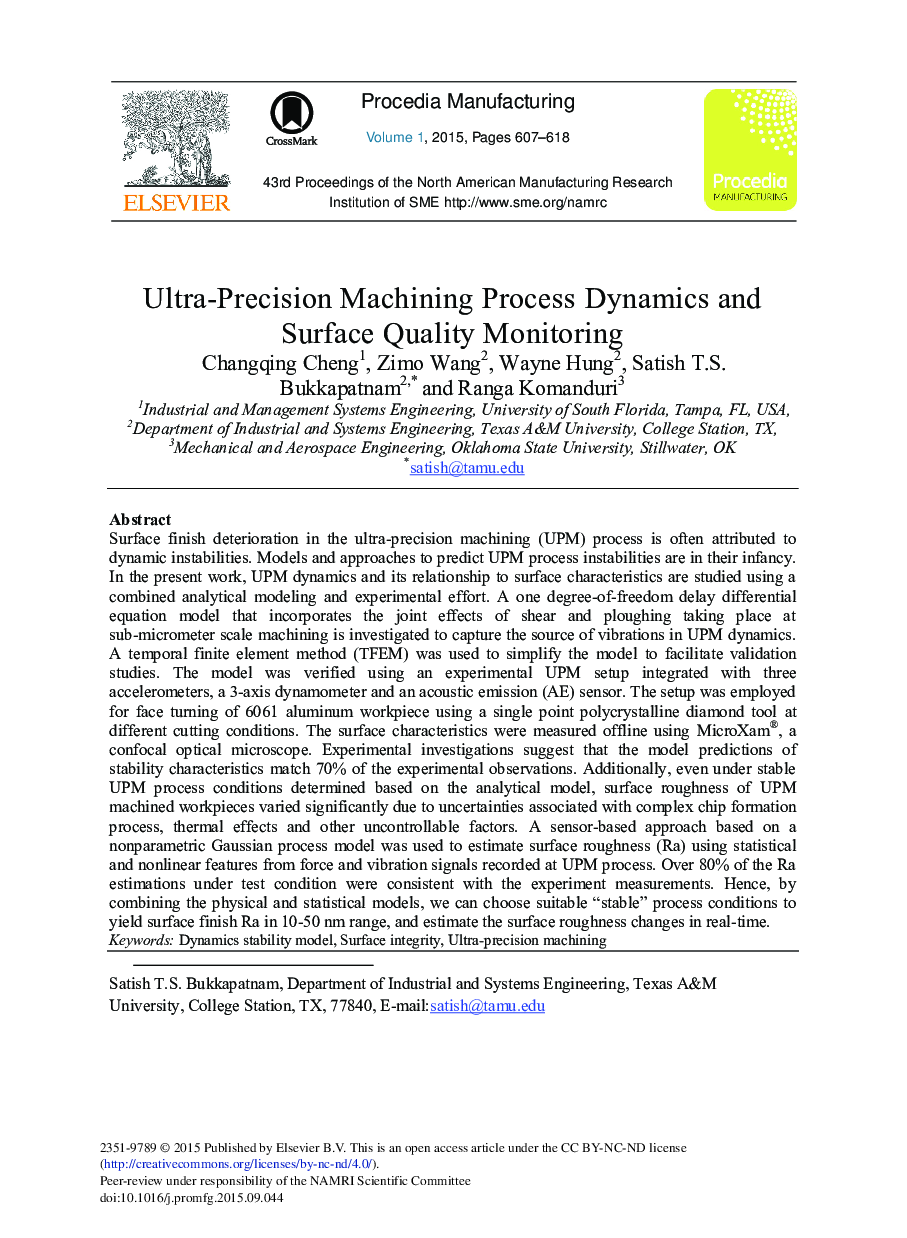| Article ID | Journal | Published Year | Pages | File Type |
|---|---|---|---|---|
| 1143728 | Procedia Manufacturing | 2015 | 12 Pages |
Surface finish deterioration in the ultra-precision machining (UPM) process is often attributed to dynamic instabilities. Models and approaches to predict UPM process instabilities are in their infancy. In the present work, UPM dynamics and its relationship to surface characteristics are studied using a combined analytical modeling and experimental effort. A one degree-of-freedom delay differential equation model that incorporates the joint effects of shear and ploughing taking place at sub-micrometer scale machining is investigated to capture the source of vibrations in UPM dynamics. A temporal finite element method (TFEM) was used to simplify the model to facilitate validation studies. The model was verified using an experimental UPM setup integrated with three accelerometers, a 3-axis dynamometer and an acoustic emission (AE) sensor. The setup was employed for face turning of 6061 aluminum workpiece using a single point polycrystalline diamond tool at different cutting conditions. The surface characteristics were measured offline using MicroXam®, a confocal optical microscope. Experimental investigations suggest that the model predictions of stability characteristics match 70% of the experimental observations. Additionally, even under stable UPM process conditions determined based on the analytical model, surface roughness of UPM machined workpieces varied significantly due to uncertainties associated with complex chip formation process, thermal effects and other uncontrollable factors. A sensor-based approach based on a nonparametric Gaussian process model was used to estimate surface roughness (Ra) using statistical and nonlinear features from force and vibration signals recorded at UPM process. Over 80% of the Ra estimations under test condition were consistent with the experiment measurements. Hence, by combining the physical and statistical models, we can choose suitable “stable” process conditions to yield surface finish Ra in 10-50 nm range, and estimate the surface roughness changes in real-time.
